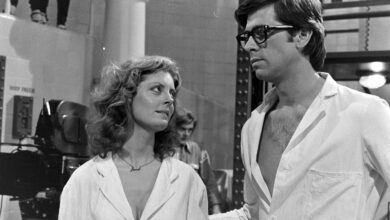This Is Why Pilots Leave Cockpit Doors Open Before Flight
:max_bytes(150000):strip_icc():format(jpeg)/cockpit-pilot-092525-d7a23afb39d04932aeccb401ad727514.jpg)
NEED TO KNOW
- Passengers can often catch a glimpse inside the cockpit while boarding a commercial aircraft, but that door is required to stay closed during flight
- An aviation expert recently told Travel + Leisure the reason is pretty straightforward
- Flight attendant Venezia Macias agreed and said it is ultimately up to the captain how long the door stays open
Passengers loading a commercial aircraft can oftentimes catch a glimpse inside the cockpit while they make their way inside, But federal law requires a physical barrier between pilots and the main cabin during flight. So why does the door stay open during boarding?
Corry Lane, director of safety at private jet charter company Cirrus Aviation Services, told Travel + Leisure the reason is pretty straightforward.
“Pilots and flight attendants are actively communicating about flight details, passenger count, fuel status, weather and any last-minute changes,” he told the outlet, adding that keeping the door open helps crews communicate more quickly with the door open.
“Ground crew, maintenance personnel, or dispatchers may need to enter the cockpit to deliver paperwork, update flight plans or perform final checks,” he added.
Getty
Flight attendant Venezia Macias agreed, telling Travel + Leisure, “Pilots leave the door open during boarding because they’re handling their own duties and need to communicate….They check in with gate agents and rampers about things like the baggage sheet for weight and balance, last-minute paperwork or maintenance issues. They also stay open to us flight attendants in case there’s a problem in the cabin — like if we might need to remove a passenger.”
She added: “At the end of the day, the captain is in command and has the final say, so the open door helps keep that flow of communication moving before departure.”
But as soon as the plane departs, the barriers must remain sealed. According to CFR 121.587 in the Code of Federal Regulations, pilots “shall ensure that the door separating the flightcrew compartment from the passenger compartment is closed and locked at all times when the aircraft is being operated.”
In response to the 9/11 terrorist attacks, Congress passed the Aviation and Transportation Security Act of 2001, which required cockpit doors to be locked while in flight except when it is necessary to let authorized persons in and out.
Despite the regulation, some groups argue more must be done to protect flight crews when the door is open.
Constantine Johnny/Getty
“Hardened flight deck doors improved security, but they are not a complete solution,” the Air Line Pilots Association wrote on their website. “A security device known as a “secondary barrier” is needed to prevent hostile individuals from reaching the flight deck any time the hard door is open during flight.”
Never miss a story — sign up for PEOPLE’s free daily newsletter to stay up-to-date on the best of what PEOPLE has to offer, from celebrity news to compelling human interest stories.
Last month, Southwest Airlines introduced its first aircraft with a secondary cockpit barrier, a spokesperson told PEOPLE. The new device prevents passengers from entering the front galley adjacent to the flight deck when a pilot needs to leave the cockpit to use the restroom or for any other reason during a flight.
According to Southwest, they are one of the first U.S. carriers with this new barrier onboard.
Credit to Nypost AND Peoples



